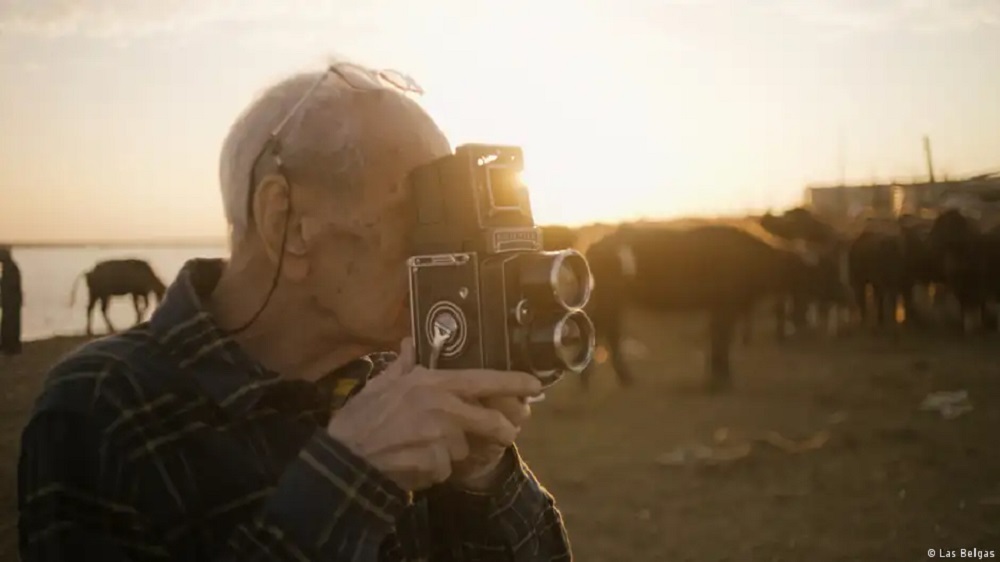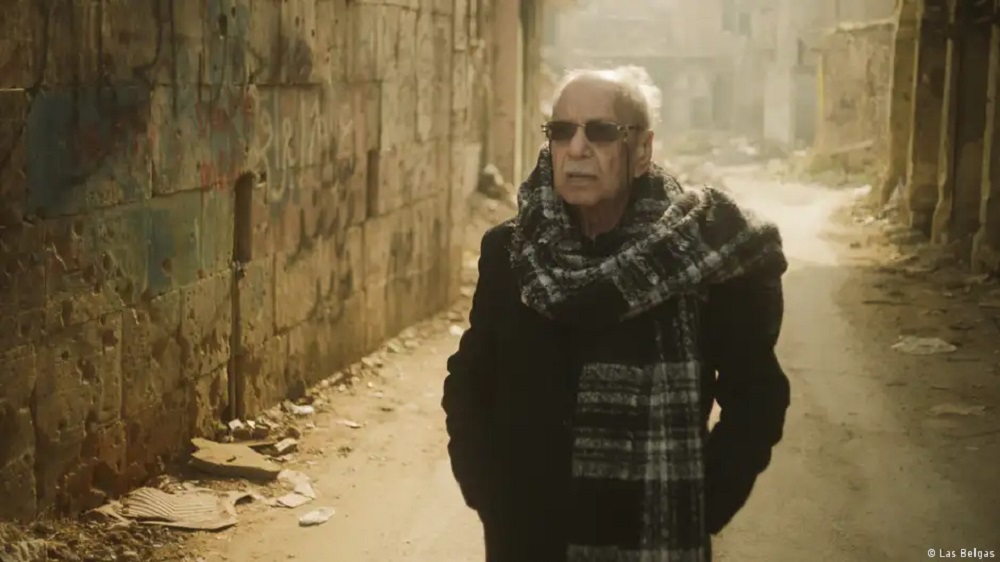Pictures, not words

In road movies, places are the focus of the action and the journey is a movement over a distance between stops. As for 'return' movies, where the protagonists go back to the places of their past, they are perhaps a subset of road movies, in which two movements either run side by side or intersect – one on the axis of place and the other on the axis of time. During the 'return', the journey runs stubbornly against the flow of time, whilst the place they return to is never the same again. Thus, the journey between the place and what has become of that place exists in two different times.
The documentary "Iraq's Invisible Beauty" by Kurdish director Sahim Omar Kalifa and Belgian director Jurgen Buedts begins with a car trip that takes Iraqi photographer Latif al-Ani back to the places he documented with his camera in different parts of his country between the 1950s and 1970s. Latif al-Ani (1932-2021) began his photographic work for the Iraq Petroleum Company in the early 1950s. In later years, he worked for various Iraqi state institutions and their publications.
Memories

In one scene, al-Ani points to a photograph of King Faisal II and tells us that he was the one who took it. He also recalls his memories of the coronation, when the electricity supply to the royal palace was cut, and the young king himself connected the generator and switched it on. We see other pictures taken by al-Ani, including one he took from the roof of the British Embassy, of smoke rising over Baghdad following the July 1958 coup, during which the king and his family were deposed. Next, we see pictures of coup leaders Abd al-Karim Qasim and Abdul-Salam Arif, and in their wake, one coup after another, all the way to photographs of Saddam Hussein, during whose rule al-Ani left Iraq to go into exile.
The history and diversity of Iraq
The journey unfolds before our eyes as a re-telling of the history of modern Iraq and its ruination again and again, narrated by a close witness. If al-Ani was reticent about expressing his opinion about politics, his achievement was to record and document the country's beauty in the course of his long professional career. He did this to contribute to the creation of a national archive of photographs, many of which have become iconic images of Iraq, its places and its people.
In al-Ani's archive, we see the diversity of Iraq, from Bedouin, Kurds and Yazidis to many other ethnicities. We see its built environment and its natural environment, its mosques, waterfalls, oil pipelines, homes and dams. In another scene, al-Ani describes a journey he made across the United States from east to west by car, and he discusses his and his fellow Iraqis' aspirations, at a point in time when he and others believed that Iraq would become like America. What is left of all this now?
The film also records a double loss. In showing the present alongside images of places photographed by al-Ani in the past, the film reveals the destruction up close and the gap between image and reality. Director Sahim Omar Kalifa takes al-Ani to Mosul, to show him the devastation that befell his favourite city after its takeover by IS. Nothing but rubble and ruin, and the people tell him that the bodies of the dead are buried under it. The elderly al-Ani cannot walk any further and asks that the car be brought to him.
"Pictures, not words,” al-Ani says in one scene. The photograph remains a unique document of time. But when the image is destroyed, what is left? Here the second dimension of loss unfolds, which also impacts on memory. Al-Ani took more than 200,000 photographs, of which only two thousand survived – less than one percent – after the National Photograph Archive was completely destroyed during the U.S. invasion of Iraq in 2003. In present-day Iraq, destruction extends to the images of its past.
We learn little about al-Ani's private life, save for a few family photos that reveal the premature death of one of his two sons, without being given any details about that personal tragedy. In conclusion, the film weaves a lament for Iraq of a special kind, full of beauty rather than sorrow. The bitter subject matter is mitigated by al-Ani's ever-present sense of humour; he is also at his ease in his encounters with the people of the areas that he re-visits and to which he simultaneously bids farewell for the last time.
© Qantara.de 2023
Translated from the Arabic by Chris Somes-Charlton
* The film is currently being shown in cinemas across the UK.